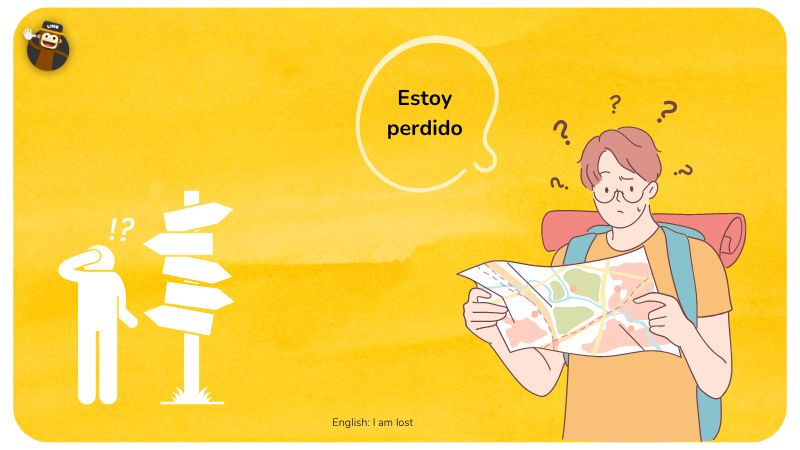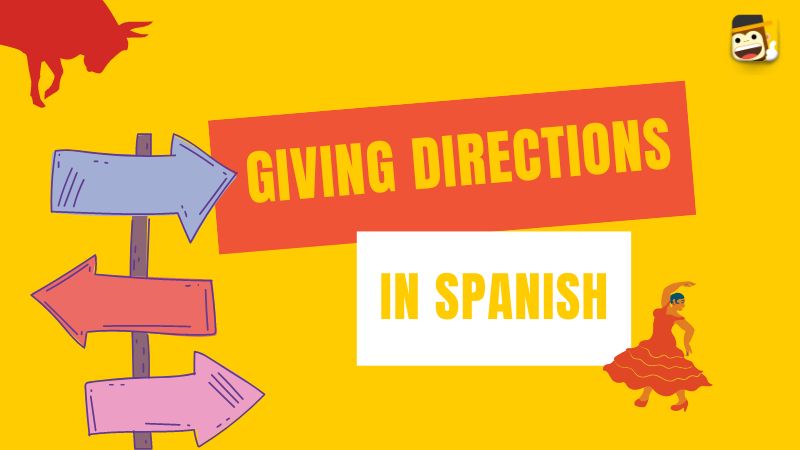I’m a very oriented guy. Whenever I travel with a group of friends, I’m always the one they talk to when they’re starting to feel lost. Most of the time, I can orient myself in the right way, but sometimes (are than I would like), I find myself in need of help. The last time I visited Spain, I was looking for a particular restaurant, and for some reason, I kept getting lost in the tangling web of streets of Barcelona.
I was running out of time, as my reservation for that restaurant that I had made months in advance would only hold for 30 minutes, and I had no clue on how to get there. Luckily, I went prepared with some vocabulary, and I was able to ask a local for directions in Spanish and got there just in time! Speaking Spanish was a tool that I am glad I had.
Knowing how to greet people and give directions in Spanish is very important and, most of all, useful in situations like this one. So, are you going to a Spanish-speaking country and want to know how to approach a local and understand his directions? Keep reading this, then!

Locations In Spanish
Location in Spanish can be translated as localización or sitio. There are lots of words you can use to express the location of something, but normally, these words are used to describe where something is in relation to something else because you can’t give a direction without first having a reference point. Sounds confusing? Let’s break it down even more then.
Like in many other languages, locations are expressed in Spanish through the use of prepositions (preposiciónes). These are words that are attached to nouns or pronouns and describe the relation of these words with the world. Let’s explore some of these.

The first word you need to know is de, which can mean “of,” “from,” “to,” “in,” “with,” or “in” and is used to describe the relationship between the location proposition and the noun or pronoun. It is usually combined with other prepositions to describe locations. For example. If you want to say that something is on top of something else, you’d say encima de (on top of).
When giving directions, you may follow by saying if something is close (en cerca de) or far (legos de) from something else. Notice how the word de is used as “to” when saying something is close and as “from” when saying something is far away.
The word “inside” is also very useful, and in Spanish, you’d say dentro de, so for example, if you want to ask if the ticket office of the museum is inside the building, you’d say ¿La taquilla está dentro del edificio? (Is the ticket office inside the building?). On the other hand, the word for “outside” is fuera de. Similarly if you want to say that something is on the side of something else, you say al lado de.
Other useful prepositions in giving Spanish directions are listed in the table below.
Giving Directions In Spanish

Let’s start with the basics, in Spanish left is ezquierda and right is derecha, while up is arriba, and down is abajo. With these words, you can point in your direction and understand where you’re supposed to go.
Additionally to prepositions, there are also some verbs that are useful when describing a location in Spanish.
- Estar – to be
- Ve (informal) – Go
- Vaya (formal) – Go
- Camina – Go ahead
- Rodea – Go around
- Gira a la derecha/izquierda – Turn right/ turn left
- Sube – Go up
- Baja – Go down
- Sal – Go out
- Entra – Enter
- Pasa por – Pass by
Putting it all together, if you wanted to say, “Walk inside and turn right,” you’d say Entra y gira a la derecha. Another common phrase is simply asking where something is. In that case we use the verb “to be” (estar) to ask where something is – ¿Dónde está la salida? (Where is the exit?).
Cardinal directions can also be useful in Spanish directions where North is Norte, South is Sur, West is Oeste, and East is Este. Now that we can say where something is, it is time to learn new vocabulary to help us navigate Spanish streets.
Spanish Direction Using Landmarks
When giving directions in Spanish, we can also use landmarks as references for our instructions. For example, we can say the bus station is in front of the mall by saying La estación de autobuses está frente al centro comercial. To be able to do this is important to know how to say specific places and landmarks.

Useful Phrases When Giving Directions In A Spanish-Speaking Country
Taking into account all the vocabulary we’ve learned, let’s look at some examples of useful phrases that you might want to memorize when giving directions in Spanish.
Learning Spanish with Ling App
Well, after this extensive explication about how to give directions in Spanish, you’re ready to become your friend’s group “Dora La Exploradora” and take them everywhere without getting lost. Even if by chance you get lost, you learned everything you need to know to ask for directions and get on the right track again!

Learning how to give directions in Spanish is just a little taste of this fascinating language. If you want to learn Spanish, then I have the perfect tool for you that has helped me master it and speak fluent Spanish.
I know what you’re thinking: “Here we go again, he’s going to propose to me a boring language course with huge textbooks”, but actually you couldn’t be more wrong! Ling App is a language learning app that will help discover the wonders of the Spanish language through fun and interactive lessons. With this mobile application, you can learn grammar, vocabulary, pronunciation, and much more everywhere and every time. Just open your phone, click on the app, and you’re ready to learn!
With only 15 minutes per day, you’ll learn Spanish in no time and be ready for every adversity or trouble that you might encounter on your next trip to Spain. Ready to give it a try? Download Ling App today from the Play Store or App Store.






















